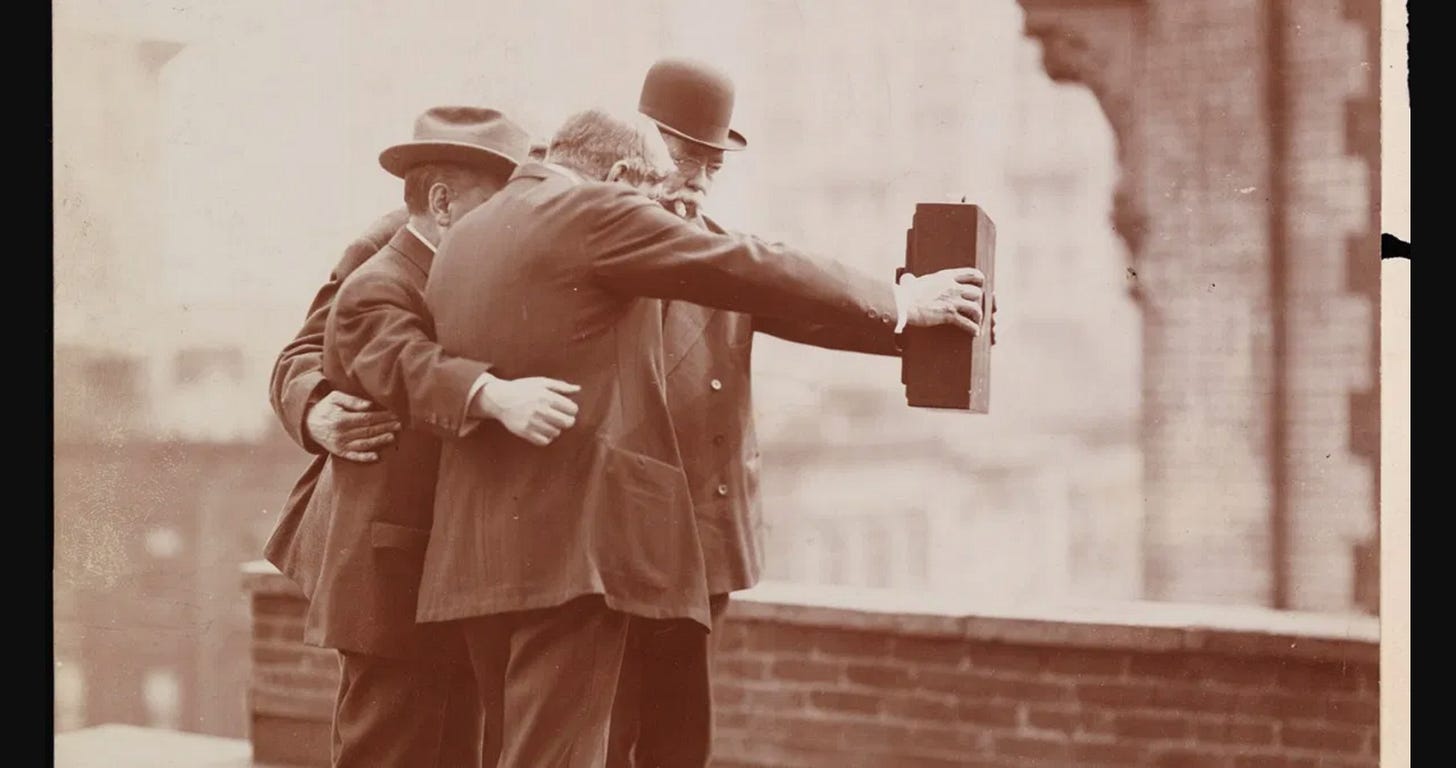Printed Photos Got Blamed for Narcissism Before Instagram.
They called it “photographic mania”, and it sounded just like today’s social media critiques.
If you post a selfie on Instagram, are you a narcissist? Today’s social scolds say yes. They believe that social media — and the many selfies that followed — created a rise in vanity. But more than 150 years ago, when photography was a new innovation, people were saying much the same thing.
Here are some highlights of a time before social media, when the camera was a strange and new cultural phenomena.
‘Photography Mania’
It was a common phrase in the 1800s. Women were considered the main victims — helpless against the need to show off. In 1862, this newspaper lamented how vain these women had become:
In 1890, ‘camera mania’ was even compared to a disease — and its spread akin to a pandemic. “It is impossible to tell over night who may be attacked by photographic mania.” “The virus works with unbelievable rapidity.” “This lady was one of the first victims of the camera epidemic.” — Times Union
Too Dangerous?
Today, newspapers warn of a new trend called “killfies” — people putting themselves in danger in order to get a great selfie. (“They’re killing us,” USA Today reports.) But that’s nothing new either. In 1889, newspapers reported the same thing. A New York Times piece titled ‘Perils of Photographers’reported on “Bold invasions of dangerous places made by ambitious amateurs.”
Social Distortion
Does a camera impact your social circle? That seemed to be a concern 50 years later, when this 1910 a piece complained about all the pictures of friends that young people displayed:
Obsessed With Yourself
Critiques continued into the 1930s, and often centered on vanity and self-obsession. A Wisconsin newspaper claimed, “It has become a science of angles and poses and lighting to bring out the beauty of persons whose supply of attractiveness is perhaps limited.” The writer then went on to blame another technology: movies. “High school girls and others in the teen age and early twenties want languescent, exotic poses as those they see in movie magazines.”
But it gets worse, the newspaper reports! People had begun using photographic retouching — a precursor to Face.app and Photoshop — to make themselves more attractive in the photograph. “Middle aged women who have become slightly obese and count more than one chin now shed their poundage though the aid of the retouchers art.” Vanity seemed to know no end.
The photography industry needed to fight back, and it did so in advertisements. In 1916, one business ran an ad with the headline: “Only the unthinking consider photography but a handmaid of vanity” Below that, they made their case for taking photographs:

It’s a beautiful ode to photography… and is just as relevant today as it was 104 years ago. Of course, we all have cameras in our pockets now, and most of us regularly use them to share what we capture with our friends. Cultural scolds may say we’re being shallow and vapid, but it’s easy to see the opposite: We’re in a photographic renaissance.
As we all sit in lockdown, relying heavily on technology that was once accused of causing depression and social strife, let’s appreciate photography and Instagram anew. These words from decades ago speak great truth: Photos “assuages the pain of absence” and “jogs a fading memory of days gone by and brings vividly before us loved faces out of the past.” Maybe our photo-driven connectivity will keep depression at bay… rather than cause it.








